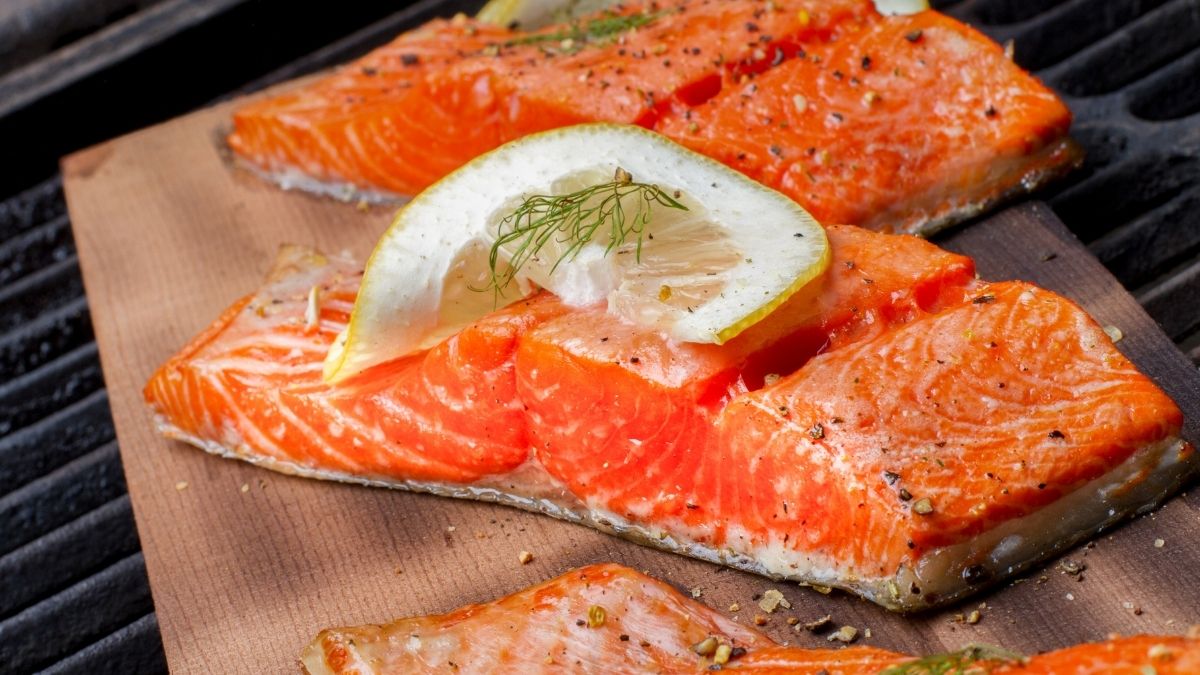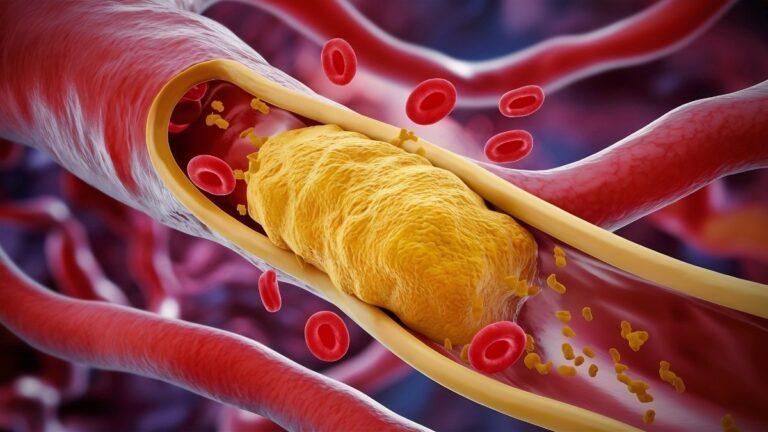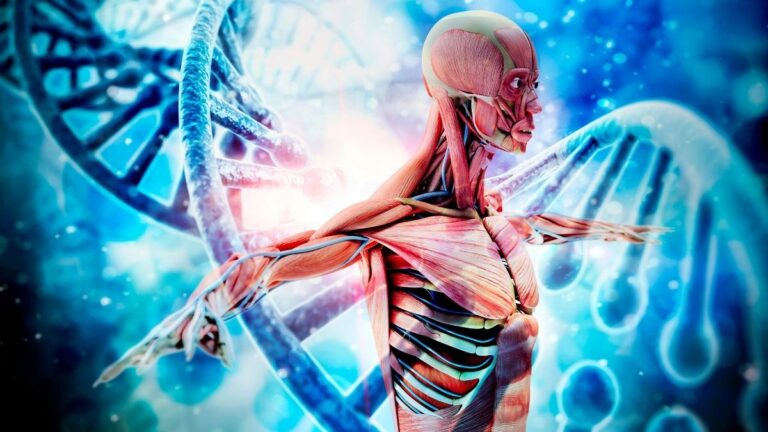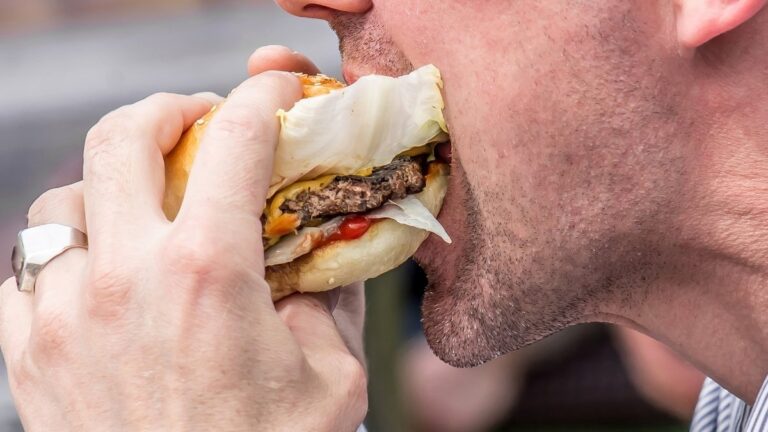Struggling with Diabetes? Science Says Add These 15 Delicious Foods ASAP for Easier Days
Right now, 37 million Americans wake up each day struggling with diabetes management. Most people spend their energy focusing on what they can’t eat. No sugar. No carbs. No fun foods. But here’s what’s frustrating: while you’re cutting out everything you love, you’re missing foods that actually help your blood sugar.
Research shows that certain foods can lower your A1C by 0.5 to 1.2 points. That’s huge. But most people never hear about these foods because everyone talks about restrictions instead of solutions.
This article reveals 15 scientifically-proven foods for diabetics that actively improve blood sugar control. You’ll discover the specific compounds in each food that benefit your body. More importantly, you’ll get practical ways to add these foods to your daily meals without major changes to how you eat.
How to Use These Foods: Your 7-Day Diabetic Meal Planning Guide
🍽️ 7-Day Diabetic Meal Planning Guide
Transform your diabetes management with strategic meal planning
Chicken breast
Greek yogurt
Eggs
Almonds
Avocados
Olive oil
Quinoa
Sweet potatoes
Blueberries
Spinach
Broccoli
Dark chocolate
(70%+ cacao)
🥘 Sunday Prep-Ahead Strategies
Why These Foods Work: The Science Behind Diabetic Superfoods

Your Blood Sugar Doesn’t Have to Be a Mystery
You eat something. Your blood sugar spikes. You feel awful. But why do some diabetic diet foods help while others make things worse?
The Real Difference: Glycemic Index vs. Glycemic Load
Glycemic index tells you how fast a food raises blood sugar. Glycemic load tells you how much it raises it. Both matter. Foods with glycemic index below 55 can reduce post-meal blood sugar spikes by 20-30%. That’s why an apple works better than white bread.
How Smart Foods Fight Blood Sugar Spikes

Fiber slows everything down. High-fiber foods slow glucose absorption by up to 40 minutes. Your body gets time to handle the sugar without panic.
Healthy fats act like brakes. They slow digestion. This means steadier blood sugar control foods work better when they include good fats like those in nuts and avocado.
Antioxidants protect your cells. They help your body use insulin better.
The Hidden Helpers: Key Nutrients That Matter
Your body needs chromium, magnesium, and alpha-lipoic acid to manage blood sugar well. Many people don’t get enough. These nutrients help insulin work properly.
When You Eat Matters Too
Eating protein before carbs can cut blood sugar spikes. Having diabetic diet foods at the right time makes them work better. Your body handles sugar differently in the morning than at night.
The science is simple: pick foods that work with your body, not against it.
Vegetables That Act Like Natural Diabetes Medicine

Tired of watching your blood sugar spike after every meal? You’re not alone. Millions of people struggle with diabetes management daily. But what if your grocery store held some powerful allies?
These five vegetables contain compounds that work like natural medicine for diabetes. They won’t replace your doctor’s care, but they can be strong partners in your health plan.
Bitter Melon: The Glucose Fighter

This bumpy green vegetable packs a punch. Bitter melon contains charantin, a compound that acts like natural insulin. Studies show it can reduce blood glucose by 15-20%.
A study in the Journal of Ethnopharmacology found that bitter melon reduced fasting glucose by 18% in just 8 weeks. That’s real change you can measure.
How to use it: Slice and stir-fry with garlic. Start with 2-3 ounces per serving. Eat it 30 minutes before your main meal for best results.
Spinach: The Sensitivity Booster

Fresh spinach delivers alpha-lipoic acid. This antioxidant helps your cells use insulin better. When your body responds to insulin properly, your blood sugar stays more stable.
How to use it: Raw in salads or lightly steamed. Aim for 1-2 cups per day. Add spinach to your breakfast eggs or lunch salad.
Broccoli: The Tolerance Helper

Broccoli contains sulforaphane, which improves how your body handles glucose. This compound helps your muscles and liver process sugar more effectively.
Research shows people who eat broccoli regularly have better glucose tolerance test results.
How to use it: Steam for 3-4 minutes to keep nutrients intact. Eat 1 cup per serving. Try it as an afternoon snack before dinner.
Brussels Sprouts: The Fiber Powerhouse

These mini cabbages combine high fiber with powerful antioxidants. Fiber slows sugar absorption, preventing blood sugar spikes. The antioxidants protect your cells from diabetes-related damage.
How to use it: Roast with olive oil until crispy. Eat 6-8 sprouts per serving. Perfect as a side dish with protein.
Asparagus: The Pancreas Protector

Asparagus provides glutathione, which supports your pancreas function. A healthy pancreas makes better insulin. When your insulin works well, your blood sugar stays in check.
How to use it: Grill or steam for 5-6 minutes. Eat 6-8 spears per serving. Great with dinner or as a mid-morning snack.
Make It Work for You
Start with one vegetable this week. Add another next week. Your taste buds need time to adjust, especially to bitter melon.
Eat these vegetables 30 minutes before meals when possible. This timing helps your body prepare for incoming carbs.
Remember: these vegetables support your diabetes management, but they don’t replace medical treatment. Work with your doctor to track your progress and adjust medications if needed.
Your blood sugar doesn’t have to control your life. These five vegetables give you natural tools to fight back.
Protein Powerhouses for Stable Blood Sugar All Day

Your blood sugar shoots up after meals. Then it crashes. You feel tired, cranky, and hungry again within hours.
Here’s what helps: eating 20g of protein before meals can reduce post-meal glucose spikes by 30%. The right proteins work like a speed bump for sugar entering your bloodstream.
Why Timing Your Protein Matters
Protein slows down how fast your body absorbs carbs. Think of it as putting brakes on a runaway car. When you eat protein first, your blood sugar rises slowly instead of spiking hard and fast.
3 Protein Champions That Keep You Steady
Wild-Caught Salmon This fish does double duty. The protein keeps blood sugar stable while omega-3s fight inflammation and help your cells use insulin better. Aim for a 4-ounce serving (about the size of your palm). Bake it with lemon and herbs to keep those nutrients intact. Skip the breading that adds empty carbs.

Greek Yogurt Plain Greek yogurt packs 15-20g of protein per serving. The probiotics team up with protein to slow sugar absorption even more. Choose full-fat versions without added sugar. Mix in berries or nuts for extra fiber that helps control blood sugar spikes.

Eggs Two eggs give you 12g of complete protein with all essential amino acids. This complete protein is like having a full toolkit instead of just a hammer. Hard-boil a batch on Sunday for quick weekday breakfasts. The protein works best when you eat eggs before toast or oatmeal.

How Much and When
Start each meal with 20-25g of protein. That’s 3-4 ounces of salmon, 3/4 cup of Greek yogurt, or 2-3 eggs. Eat the protein first, then add your carbs and vegetables.
Power Combinations That Work
Pair salmon with roasted vegetables instead of rice. Mix Greek yogurt with chopped almonds and cinnamon. Eat scrambled eggs with avocado before having fruit.
Your blood sugar stays more even when protein leads the meal. You’ll feel satisfied longer and avoid those energy crashes that make you reach for snacks. Start tomorrow morning with eggs before your usual breakfast. Your steady energy will thank you.
3 Surprising Fruits That Won’t Spike Your Blood Sugar
You’ve been told to avoid fruit because of sugar. But here’s what most people don’t know: some fruits actually help control blood sugar instead of raising it.
These three fruits might surprise you. They’re sweet, satisfying, and won’t send your glucose levels soaring.
Blueberries: The Insulin Helper

Blueberries pack a secret weapon called anthocyanins. These dark purple compounds make your body use insulin better. That means your cells grab sugar from your blood more easily.
A Harvard study followed 200,000 people and found something amazing. Eating blueberries just three times per week cut diabetes risk by 26%. That’s huge for such a simple change.
The best part? Fresh or frozen both work. Toss a handful on your yogurt, blend them in smoothies, or eat them straight from the container. Your blood sugar will thank you.
Avocados: The Creamy Champion

Yes, avocados are fruit. And they’re perfect for blood sugar control.
They’re loaded with monounsaturated fats and fiber. This combo slows down sugar absorption. When you eat avocado with other foods, it actually helps prevent blood sugar spikes from those foods too.
Half an avocado has almost no carbs but tons of satisfaction. The healthy fats keep you full for hours. Add it to salads, spread it on toast, blend it into smoothies, or eat it with a sprinkle of salt.
Tart Cherries: The Sleep and Sugar Solution

Tart cherries do double duty. They’re packed with antioxidants that fight inflammation. But here’s the bonus: they contain natural melatonin.
Better sleep means better blood sugar control. When you’re tired, your body struggles to manage glucose. Tart cherries help you sleep deeper and keep your blood sugar steady.
Drink tart cherry juice before bed or snack on dried tart cherries during the day.
The Bottom Line
Stop avoiding all fruit. These three options actually support healthy blood sugar levels. Start with small portions and see how your body responds. Most people find they can enjoy these fruits without any blood sugar drama.
Your sweet tooth doesn’t have to be your enemy.
Whole Grains and Seeds That Actually Help Diabetes
You’ve been told to avoid carbs. Your doctor said “cut the grains.” But here’s what they didn’t tell you: some carbs actually help control your blood sugar.
The problem isn’t carbs. It’s the wrong carbs. White bread spikes your glucose. Steel-cut oats do the opposite.
Steel-Cut Oats: Your Blood Sugar’s Best Friend

Steel-cut oats contain beta-glucan fiber. This fiber forms a gel in your stomach. The gel slows down sugar absorption. Your blood sugar stays steady instead of spiking.
A half-cup serving gives you 4 grams of beta-glucan. Studies show this amount can lower your A1C by 0.3%. That’s significant progress for something so simple.
Cook them Sunday night. Reheat portions all week. Add cinnamon and walnuts for extra blood sugar benefits.
Chia Seeds: Tiny Powerhouses for Glucose Control

Two tablespoons of chia seeds pack 10 grams of fiber. That’s more than most people eat in an entire day. This fiber slows glucose absorption just like oats do.
Chia seeds also give you omega-3 fatty acids. These fats reduce inflammation in your blood vessels. Less inflammation means better insulin sensitivity. Better insulin sensitivity means lower blood sugar.
Mix chia seeds into yogurt before bed. By morning, they’ll be soft and pudding-like. Your blood sugar will thank you at breakfast.
The myth says diabetics can’t eat grains or seeds. The truth says you can’t eat refined grains. There’s a huge difference. Steel-cut oats and chia seeds prove that the right carbs help, not hurt.
Your body needs fiber to control blood sugar. These foods deliver that fiber along with nutrients your cells crave. Stop avoiding all carbs. Start choosing the right ones.
Nuts and Spices: Small Foods, Big Impact
You don’t need huge diet changes to see big results. Sometimes the smallest additions make the biggest difference. Two perfect examples sit in your pantry right now.
Walnuts: Brain Food That Helps Your Blood Sugar Too

Walnuts contain alpha-linolenic acid. This omega-3 fat improves how your body uses insulin. Better insulin function means more stable blood sugar all day long.
Eat just seven walnut halves daily. That’s one ounce. This small serving can improve your insulin sensitivity by 16% in just three months. The research proves it works.
Walnuts also help with another diabetes problem: heart disease. The same fats that help your blood sugar protect your arteries too. You get double protection from one simple snack.
Cinnamon: The Spice That Acts Like Medicine

Here’s something amazing: just 1/2 teaspoon cinnamon daily reduced A1C by 0.83% in clinical trials. That’s better than some medications.
Cinnamon contains chromium and polyphenols. Chromium helps insulin work better. Polyphenols reduce inflammation. Together, they create a powerful blood sugar team.
Add cinnamon to your coffee. Sprinkle it on steel-cut oats. Mix it into yogurt with chia seeds. The key is consistency. Daily use gives you the benefits.
Not all cinnamon works the same. Ceylon cinnamon works better than cassia cinnamon. Check the label. Ceylon costs more but delivers better results.
These foods work because they fix the root problems. Bad inflammation makes insulin work poorly. These foods reduce inflammation. Poor insulin sensitivity raises blood sugar. These foods improve sensitivity.
You don’t need perfect meals every day. You need consistent small choices that add up. Walnuts and cinnamon are those choices.
How to Use These Foods: Your 7-Day Diabetic Meal Planning Guide
🍽️ 7-Day Diabetic Meal Planning Guide
Transform your diabetes management with strategic meal planning
Chicken breast
Greek yogurt
Eggs
Almonds
Avocados
Olive oil
Quinoa
Sweet potatoes
Blueberries
Spinach
Broccoli
Dark chocolate
(70%+ cacao)
🥘 Sunday Prep-Ahead Strategies
Conclusion
These 15 foods work because they contain special compounds that help your insulin do its job better. You don’t need to eat all of them at once. Start with 3-5 foods that you already like. Then slowly add more to your meals.
Here’s the truth: consistency beats perfection every time. Eating these foods most days will help more than eating them perfectly for just a week. Your blood sugar won’t change overnight, but small daily choices add up to big results.
Always work with your healthcare provider to track your progress. They can help you see what’s working and what needs to change.
Ready to transform your diabetes management? Download our free 7-day meal plan featuring all 15 of these powerful foods. Click here to get your copy and start seeing better blood sugar numbers in just one week. This meal plan makes it easy to include the best foods for diabetics in every meal.








